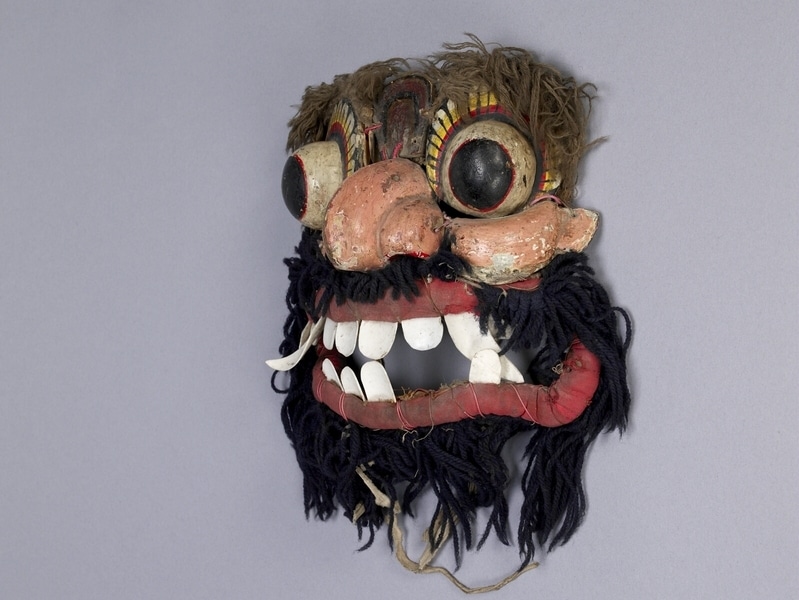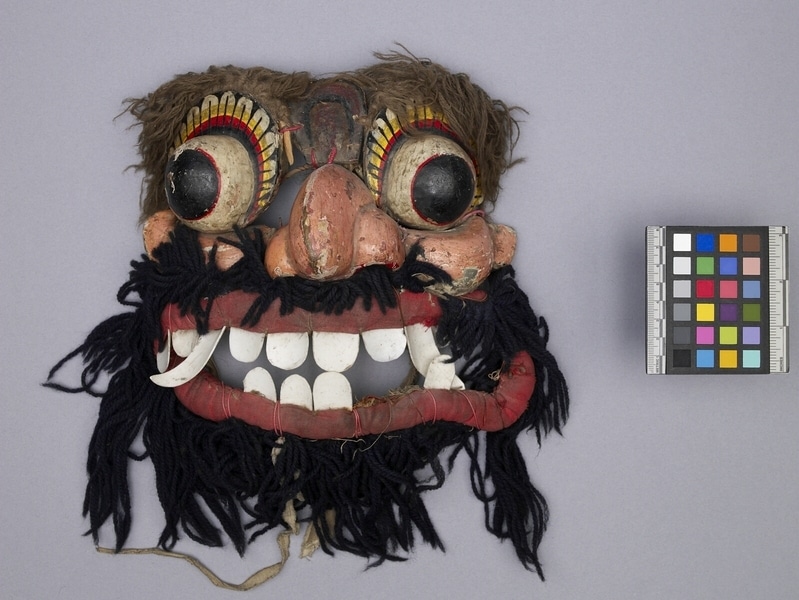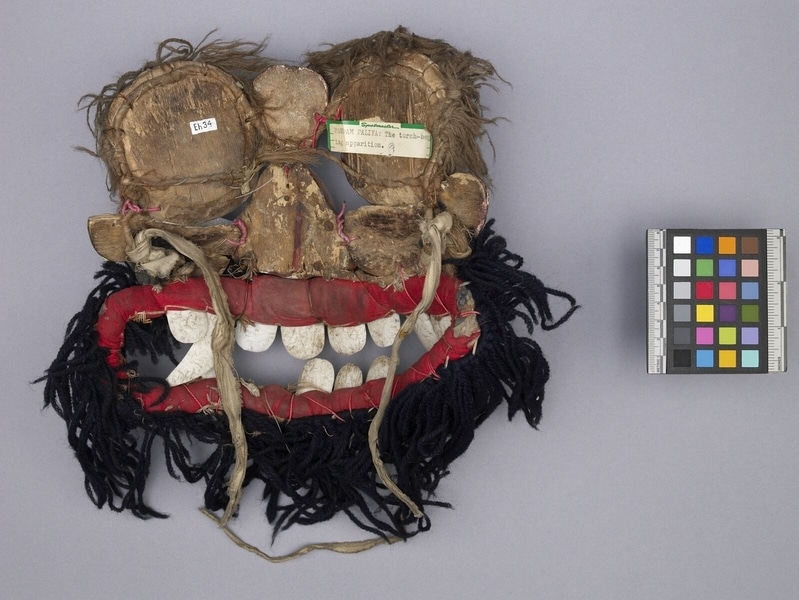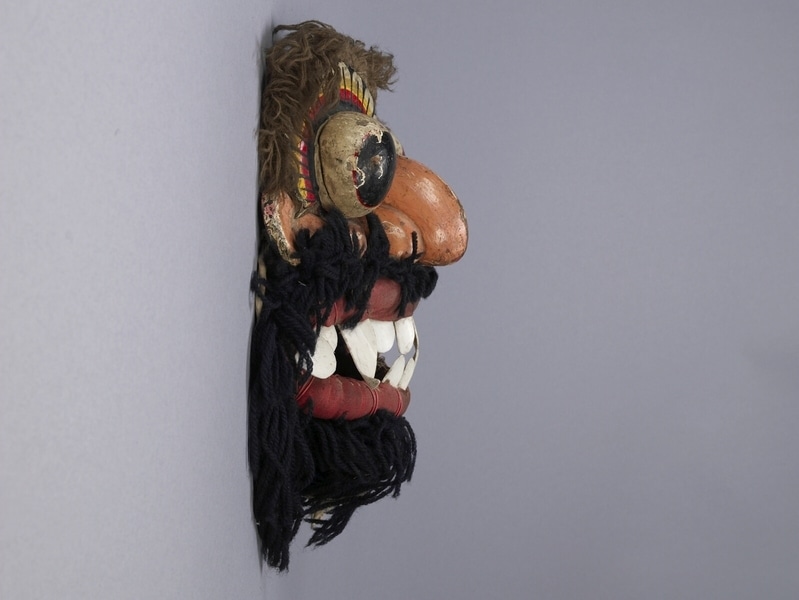Mask Item Number: Eh34 from the MOA: University of British Columbia




Description
Mask depicting Pandam Paliya ("the torch-bearing apparition") with a humanoid face that is squarish in shape. The mask has bulbous eyes and nose with a wide mouth stretching across whole face. Each feature (eyes, cheeks, forehead, and nose) is a separate piece of wood wired together. Cloth covered wire outlines the back of the eyes and the bottom of left cheek. Oval mouth of red stuffed fabric wired at intervals around lips. White plastic teeth, two large protruding fangs on top row. Under nose and around mouth is a beard of black wool strands. Nose and cheeks are flesh-toned. Protruding eyes are carved on circular backgrounds with red, yellow and black petal designs on the lids. The black pupils are outlined in red. The brown wool eyebrows are knotted, tied and wired to the eyes. A label on the reverse reads, "PANDAM PALIYA: The torch-bearing appartition" in typed letters, and also a circled "7" in pencil.
History Of Use
Worn during curing ritual of the Sanni Yakuma ceremony, part of the Tovil series of dramas performed by Sinhalese ritual specialists and dancers. The Sanni Yakuma is intended to combat diseases and afflictions caused by the Sanni group of demons. These consist of 18 or more apparitions of the chief demon, Maha-kola-sanni. The officiating healer honours Buddha, then appeases the demons with offerings, dancing, and chanting. This mask represents Pandam Paliya, a torch bearing apparition. It is one of twelve Pelapali masks used in the second stage of the Sanni ritual. These dancers invite the Sanni demons, purify the area and provide comic refief.
Cultural Context
exorcism
Item History
- Made in Sri Lanka before 1978
- Collected during 1978
- Owned by Jason Schoonover before February 10, 1981
- Received from Museum of Anthropology Shop Volunteers (Funding source) and Jason Schoonover (Seller) on February 10, 1981
What
Who
- Culture
- Sinhalese
- Previous Owner
- Jason Schoonover
- Received from
- Museum of Anthropology Shop Volunteers (Funding source) and Jason Schoonover (Seller)
Where
- Holding Institution
- MOA: University of British Columbia
- Made in
- Sri Lanka
When
- Creation Date
- before 1978
- Collection Date
- during 1978
- Ownership Date
- before February 10, 1981
- Acquisition Date
- on February 10, 1981
Other
- Condition
- fair
- Accession Number
- 0704/0033